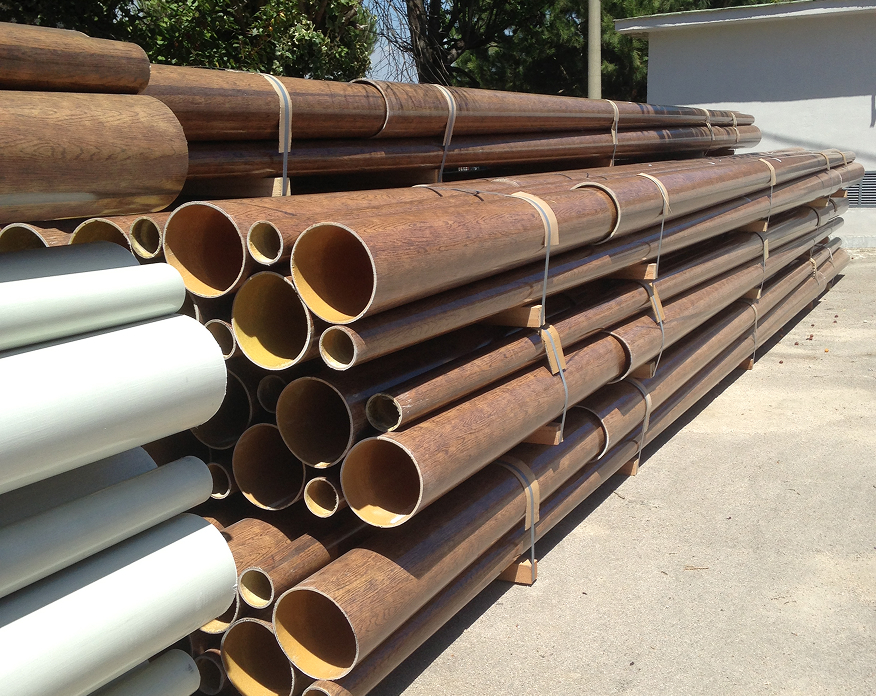The fiberglass-reinforced resin pole / GRP poles (Glass Reinforced Plastic) is a lightweight, internally hollow, monolithic support with a conical section. It was conceived and perfected to replace traditional poles such as wooden ones, as a support for aerial wired networks, free of treatments or harmful components to safeguard the flora and fauna of the installation site.

Aerial wired networks were originally developed on traditional wooden pole supports. Over the years, attempts were made to replace them with metal or concrete poles, but without achieving a substantial solution to the disadvantages of this system. Then the pole made of resin reinforced with glass fiber fabric was conceived, which, despite a relatively higher cost, offered enormous advantages:
 Easy to install
Easy to install
In non-particularly rocky terrain, two people, without heavy machinery, can quickly dig a hole slightly deeper than one meter and erect a pole in it. No crane, no mechanical excavator, no problem.
 Useful life 50 years
Useful life 50 years
A support that remains functional for decades, without the need for inspections and replacements and with minimal environmental impact: no protective paints leaching into the soil, no risk of intoxication for local fauna.
 No maintenance
No maintenance
Even in very aggressive environments, these poles resist all adverse conditions without the need for costly maintenance or replacements, unlike wooden and metal poles. They are therefore very useful in coastal areas with salt spray, in saline environments like lagoons where the pole base can even be submerged during certain periods, in areas exposed to strong winds where the pole flexes significantly but always returns to its original shape, in tropical environments with high temperature and humidity, and in desert environments with high thermal excursion or extreme temperatures.
 Excellent performance/weight ratio
Excellent performance/weight ratio
An 8m pole weighs about 40kg, but can support the weight of an elephant (compression load 4000kg) and resist the constant pull of a pair of oxen (working force applied at the top 280-500kg): without breaking or deforming! This is why they are used for solar panels, public lighting, copper cables, line distributors, surveillance cameras, and various accessories… sometimes all on the same pole!
 Hollow Inside
Hollow Inside
Unlike wooden or concrete poles, these poles are hollow inside. This is an advantage for passing cables that need to reach the top from underground, but also for housing fiber optic distribution boxes, copper cable connection terminals, or antennas (wi-fi, 4G, 5G).
 Hi fire resistance
Hi fire resistance
The plastic material, mixed with self-extinguishing additives, leaves these poles unharmed by the passage of a forest fire front. Furthermore, a direct flame applied to the pole self-extinguishes in less than 5 seconds without spreading or damaging the structure. The advantage for installations in isolated rural areas is evident.
 No electrical conductivity
No electrical conductivity

 Economic and environmental advantages in logistics
Economic and environmental advantages in logistics
The conical section of these poles, combined with the fact that they are hollow, allows them to be inserted into one another multiple times during transport. Thus, a standard curtain-sided truck, which would normally carry about 150 wooden poles, can carry up to 500 fiberglass poles (7m, nested in groups of 5). This means that the transport cost is distributed over many more units, and also that the CO2 emitted is up to 4 times lower.
 Passive safety on the road side
Passive safety on the road side
